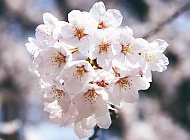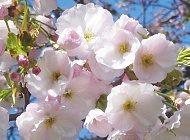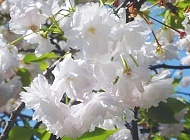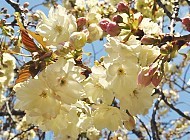Who is... he?
I like to share the version of .... http://www.businessweek.com/magazine/content/05_48/b3961001.htm.... on Mr Peter Drucker.
Born in Austria in 1909 into a highly educated professional family, he seemed destined for some kind of greatness. The Vienna that Drucker knew had been a cultural and economic hub, and his parents were in the thick of it. Sigmund Freud ate lunch at the same cooperative restaurant as the Druckers and vacationed near the same Alpine lake. When Drucker first met Freud at the age of eight, his father told him: "Remember, today you have just met the most important man in Austria and perhaps in Europe." Many evenings his parents, Adolph and Caroline, would gather the intellectual elite in the drawing room of their Vienna home for wide-ranging discussions of medicine, politics, or music. Peter absorbed not merely their content but worldliness and a style of expression.
When Hitler organized his first Nazi meeting in Berlin in 1927, Drucker, raised a Protestant, was in Germany, studying law at the University of Frankfurt. He attended classes taught by Keynes and Joseph Schumpeter. As a student, a clerk in a Hamburg export firm, and a securities analyst in a Frankfurt merchant bank, he lived through the years of Hitler's emergence, recognizing early the menace of centralized power. When his essay on Friedrich Julius Stahl, a leading German conservative philosopher, was published as a pamphlet in 1933, it so offended the Nazis that the pamphlet was banned and burned. A second Drucker pamphlet, Die Judenfrage in Deutschland, or The Jewish Question in Germany, published four years later, suffered the same fate. The only surviving copy sits in a folder in the Austrian National Archives with a swastika stamped on it.
Drucker immigrated to London shortly after Hitler became Chancellor, taking a job as an economist at a London bank while continuing to write and to study economics. He came to America in 1937 as a correspondent for a group of British newspapers, along with his new wife, Doris, whom he had met in Frankfurt. "America was terribly exciting," remembered Drucker. "In Europe the only hope was to go back to 1913. In this country everyone looked forward."
So did Drucker. He taught part time at Sarah Lawrence College before joining the faculty at Bennington College in Vermont. He could be a difficult taskmaster. One Bennington student recalled that Drucker said her paper "resembled turnips sprinkled with parsley. I could wring his fat frog-like neck," she wrote in a letter to her parents. "Unfortunately, he is a very brilliant and famous man. He has at least taught me something."
Drucker was a professor of politics and philosophy at Bennington when he was given the opportunity to study General Motors in 1945, the first time he peeked inside the corporation. His examination led to the publication of his groundbreaking book, Concept of the Corporation, and his decision, in 1950, to attach himself to New York University's Graduate School of Business. It was around this time that Drucker heard Schumpeter, then at Harvard University, say: "I know that it is not enough to be remembered for books and theories. One does not make a difference unless it is a difference in people's lives."
CREATING A DISCIPLINE
He took Schumpeter's advice to heart, beginning a career in consulting while continuing his life as a teacher and writer. Drucker's most famous text, The Practice of Management, published in 1954, laid out the American corporation like a well-dissected frog in a college laboratory, with chapter headings such as "What is a Business?" and "Managing Growth." It became his first popular book about management, and its title was, in effect, a manifesto. He was saying that management was not a science or an art. It was a profession, like medicine or law. It was about getting the very best out of people. As he himself put it: "I wrote The Practice of Management because there was no book on management. I had been working for 10 years consulting and teaching, and there simply was nothing or very little. So I kind of sat down and wrote it, very conscious of the fact that I was laying the foundations of a discipline."
Drucker taught at NYU for 21 years -- and his executive classes became so popular that they were held in a nearby gym where the swimming pool was drained and covered so hundreds of folding chairs could be set up. Drucker moved to California in 1971 to become a professor of social sciences and management at Claremont Graduate School, as it was known then. But he was always thought to be an outsider -- a writer, not a scholar -- who was largely ignored by the business schools. Tom Peters says he earned two advanced degrees, including a PhD in business, without once studying Drucker or reading a single book written by him. Even some of Drucker's colleagues at NYU had fought against awarding him tenure because his ideas were not the result of rigorous academic research. For years professors at the most elite business schools said they didn't bother to read Drucker because they found him superficial. And in the years before Drucker's death even the dean of the Peter F. Drucker Graduate School of Management at Claremont said: "This is a brand in decline."
In the 1980s he began to have grave doubts about business and even capitalism itself. He no longer saw the corporation as an ideal space to create community. In fact, he saw nearly the opposite: a place where self-interest had triumphed over the egalitarian principles he long championed. In both his writings and speeches, Drucker emerged as one of Corporate America's most important critics. When conglomerates were the rage, he preached against reckless mergers and acquisitions. When executives were engaged in empire-building, he argued against excess staff and the inefficiencies of numerous "assistants to." In a 1984 essay he persuasively argued that CEO pay had rocketed out of control and implored boards to hold CEO compensation to no more than 20 times what the rank and file made. What particularly enraged him was the tendency of corporate managers to reap massive earnings while firing thousands of their workers. "This is morally and socially unforgivable," wrote Drucker, "and we will pay a heavy price for it."
The hostile takeovers of the 1980s, a period that revisionists now say was essential to improve American efficiency and productivity, was for Drucker "the final failure of corporate capitalism." He then likened Wall Street traders to "Balkan peasants stealing each other's sheep" or "pigs gorging themselves at the trough." He maintained that multimillion-dollar severance packages had perverted management's ability to look out for anything but itself. "When you have golden parachutes," he told one journalist, "you have created incentives for management to collude with the raiders." At one point, Drucker was so put off by American corporate values that he was moved to say that, "although I believe in the free market, I have serious reservations about capitalism."
We tend to think of Drucker as forever old, a gnomic and mysterious elder. At least I always did. His speech, always slow and measured, was forever accented in that commanding Viennese. His wisdom could not have come from anyone who was young. So it's easy to forget his dashing youth, his long devotion to one woman and their four children (until the end, Drucker still greeted his wife of 71 years with an effusive "Hello, my darling!"), or even his deliciously self-deprecating sense of play.
During his early consulting work with DLJ, the partners flew out to California to meet with Drucker at home. After one of his famously meandering monologues, Drucker thought everyone needed a break.
"Well, boys," he said, "why don't we relax for a few minutes? Let's go for a swim."
The executives explained that they hadn't brought their swimming trunks.
"You don't need swimming suits because it's just men here today," replied Drucker.
"And we took off our clothes and went skinny-dipping in his pool," recalls Charles Ellis, who was with the group.
Surely, Drucker never fit into the buttoned-down stereotype of a management consultant. He always favored bright colors: a bottle-green shirt, a knit tie, a royal blue jacket with a blue-on-blue shirt, or simply a woolen flannel shirt and tan trousers. Drucker always worked from a home office filled with books and classical records on shelves that groaned under their weight. He never had a secretary and usually handled the fax machine and answered the telephone himself -- he was something of a phone addict, he admitted.
PRIVACY PREVAILS
Yet Drucker also was an intensely private man, revealing little of his personal life, even in his own autobiography, Adventures of a Bystander, the book he told me was his favorite of them all. Not surprisingly, perhaps, the Drucker Archives at Claremont Graduate University contain only one personal letter from his wife to him. Doris had clipped two images from a 1950s-era newspaper, one of a handsome man in a plaid robe, fresh from a good night's sleep, another of a couple in love, man and woman staring into each other's eyes, over a late evening snack. She glued each black-and-white image onto a flimsy piece of typing paper and wrote the words: "I love you in the morning when things are kind of frantic. I love you in the evening when things are more romantic." It is undated and unsigned.
It was Doris, in her own unpublished memoir, who told the story of how she once locked Drucker in a London coal cellar to hide him from her disapproving mother. As Doris' mother turned the house upside down in a frantic search for a man she thought was sleeping with her daughter, Peter spent the better part of the night crouched in a cold, dark hole. Doris' mother had long hoped her daughter would someday marry a Rothschild or a German of high social standing. The last thing she wanted was for her to marry a light-in-the-pocket Austrian.
In his later years, as his health weakened, so did Drucker's magnetic pull. Although he maintained a coterie of corporate followers, he increasingly turned his attention to nonprofit leaders, from Frances Hesselbein of the Girl Scouts of the USA to Rick Warren, founding pastor of Saddleback Church in Lake Forest, Calif. Warren, author of The Purpose-Driven Life, considered Drucker a mentor. "Drucker told me: 'The function of management in a church is to make the church more churchlike, not more businesslike. It's to allow you to do what your mission is,"' Warren said. "Business was just a starting point from which he had this platform to influence leaders of all different kinds."
Still, it was clear Drucker cared deeply about how he would be remembered. He tried in 1990 to discredit and quash an admiring biography of quality guru Deming, whom he seemed to consider a rival. And when Professor O'Toole assessed the influence of Drucker's landmark 1945 study on General Motors, he concluded that the guru not only had had no impact on GM but also became persona non grata at the company for nearly half a century. "I sent it to Peter, and he spent hours going over it with me," recalls O'Toole. "He was a little unhappy with it because he didn't like the conclusion. He felt he had had a big impact at GM. I thought that was either very generous of Peter or else he was kidding himself."
During the same period, Drucker, then 80 years old, penned a severely flawed foreword for a new edition of Alfred Sloan's My Years with General Motors. In one passage, Drucker quotes Sloan as saying that the death of his younger brother Raymond was "the greatest personal tragedy in my life." Raymond, however, died 17 years after Alfred. In another section, Drucker noted that the publication of the book had been delayed because Sloan "refused to publish as long as any of the GM people mentioned in the book was still alive. On the day of the death of the last living person mentioned in the book, Sloan released it for publication," wrote Drucker. In fact, Sloan generously heaped praise on 14 colleagues in the preface of his book, and all were still alive when My Years with General Motors was first published.
Whether the mistakes were a result of sloppiness or his declining intellectual power is not clear. But Drucker was no longer at the top of his game. The dean of the Drucker school, Cornelis de Kluyver, had reason to believe that Drucker's influence was on the wane -- the school was having difficulty attracting big money from potential donors. To gain a $20 million gift for its puny endowment, de Kluyver agreed in 2003 to put another name on the school, that of Masatoshi Ito, the founder of Ito-Yokado Group, owner of 7-Eleven stores in Japan and North America. Students protested, even marching outside the dean's office toting placards decrying the change. An ailing Drucker volunteered to speak directly to the students. "I consider it quite likely that three years after my death my name will be of absolutely no advantage," he told them. "If you can get 10 million bucks by taking my name off, more power to you."
In April, during our last meeting, I asked Drucker what he had been up to lately. "Not very much," he replied. "I have been putting things in order, slowly. I am reasonably sure that I am not going to write another book. I just don't have the energy. My desk is a mess, and I can't find anything."
I almost felt guilty for having asked the question, so I praised his work, the 38 books, the countless essays and articles, the consulting gigs, his widespread influence on so many of the world's most celebrated leaders. But he was agitated, even dismissive, of much of his accomplishment.
"I did my best work early on -- in the 1950s. Since then it's marginal. O.K.? What else do you have?"
I pressed the nonagenarian for more reflection, more introspection. "Look," he sighed, "I'm totally uninteresting. I'm a writer, and writers don't have interesting lives. My books, my work, yes. That's different."
......





